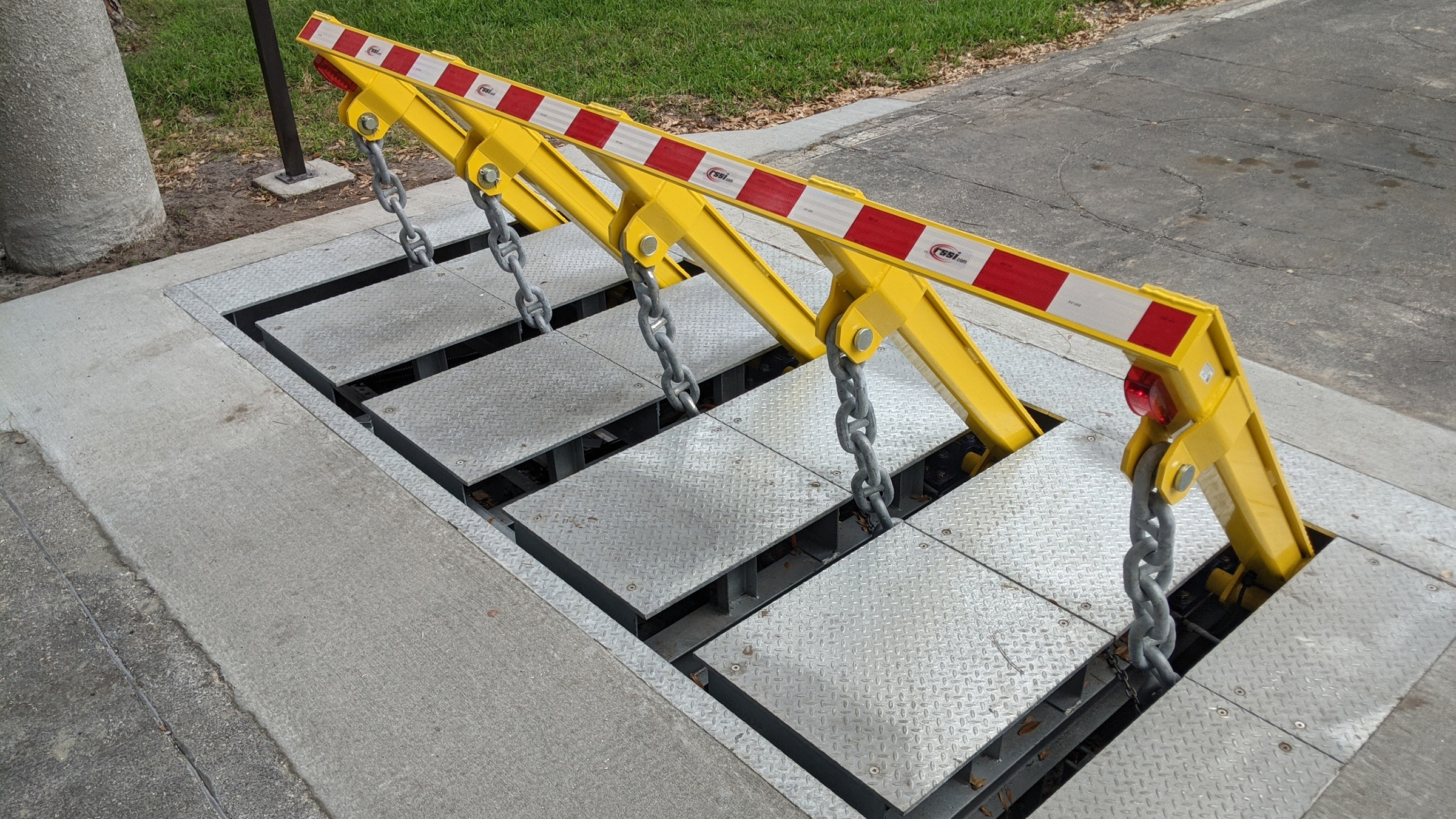Not known Facts About Wedge Barriers
Unknown Facts About Wedge Barriers
Table of ContentsWedge Barriers Things To Know Before You BuySome Known Details About Wedge Barriers

The Buzz on Wedge Barriers
g., spring support 65 )may be taken care of to the end of the springtime pole 58 to allow compression of the springtimes 60. As the springs 60 are pressed between the spring sustains 62, the spring setting up 54 produces a force acting upon the camera combined to the springtime rod 58 in an instructions 66. As an example, the remaining pressure put on
the camera to deploy the wedge plate 16 might be supplied by an electromechanical actuator 84 or other actuator. Thus, the spring assembly 54 and the actuator 84(e. g., electromechanical actuator)may operate with each other to translate the camera and lift the wedge plate 16.
As discussed above, the spring setting up 54 applies a constant force on the camera, while the electromechanical actuator might be controlled to put in a variable pressure on the cam, thus enabling the training and lowering( i. e., releasing and retracting )of the wedge plate 16. In particular personifications, the continuous force used by the springtime setting up 54 might be adjustable. g., electromechanical actuator) is handicapped. As will be appreciated, the springtime setting up 54 may be covered and secured from particles or various other aspects by a cover plate(e. g., cover plate 68 displayed in FIG. 4) that may be considerably flush with the elevated surface area 38 of the structure 14. As stated over, in the released placement, the wedge plate 16 offers to block access or traveling beyond the barrier 10. The obstacle 10(e. g., the wedge plate 16 )might obstruct pedestrians or automobiles from accessing a home or path. As reviewed over, the obstacle 10 is connected to the support 30 protected within the foundation 14,

front braces 71. Therefore, the link assemblies 72 may pivot and turn to allow the collapse and expansion of the linkage assemblies 72 throughout retraction and deployment of the bather 10. The linkage assemblies 72 reason activity of the wedge plate 16 to be limited. If a car is traveling in the direction of the released wedge plate 16(e. For example, in one situation, the safety legs 86 might be expanded throughoutmaintenance of the barrier 10. When the safety legs 86 are deployed, the safety legs 86 sustain the weight of the wedge plate 16 against the surface area 12. Therefore, the training mechanism 50 may be deactivated, serviced, gotten rid of, replaced, and so forth. FIG. 5 is partial perspective sight of an embodiment of the surface-mounted wedge-style barrier 10, showing the camera 80 and the cam surfaces 82 of the lifting system 50. Specifically, two camera surface areas 82, which are described as lower webcam surfaces 83, are placed below the camera 80. The reduced web cam surface areas 83 might be taken care of to the surface area 12 (e. For instance, the reduced camera surface areas 83 and the placing plate 85 might develop a single item that is secured to the anchor 30 by bolts or various other mechanical bolts. Additionally, two camera surfaces 82, which are referred to as upper camera surfaces 87, are placed above the camera 80 and paired to (e. In various other embodiments, stepping in layers or plates may be placed between the surface area 12 and the lower camera surfaces 83 and/or the wedge plate 16 and the top camera surface areas 87 As mentioned over, the camera
80 equates along the cam surface areas 82 when the wedge plate 16 is raised from the go to this site retracted position to the released setting. Additionally, as stated above, the spring assembly 54 (see FIG. 3 )may supply a force acting on the cam 80 in the direction 102 via spring pole 58, which may decrease the force the electromechanical actuator 84 is needed to put on the cam 80 Look At This in order to activate and lift the wedge plate 16. 1 )to the released setting(see FIG. 4). As revealed, the webcam 80 consists of track wheels 104(e. g., rollers), which contact and equate along the webcam surface areas 82 during procedure.